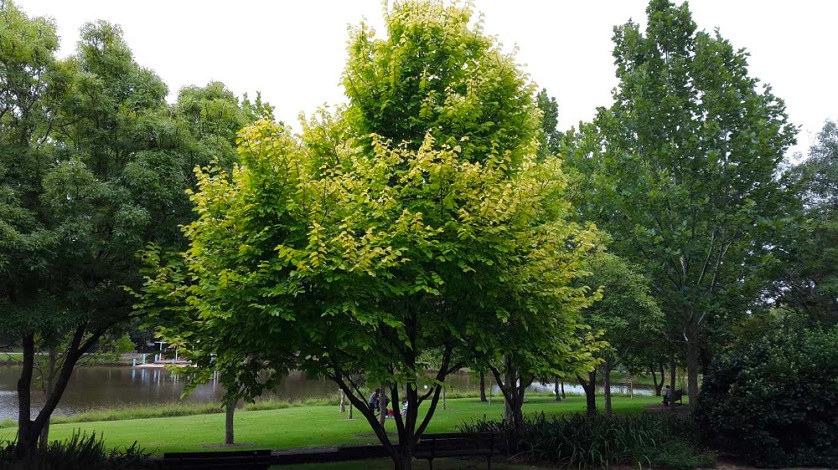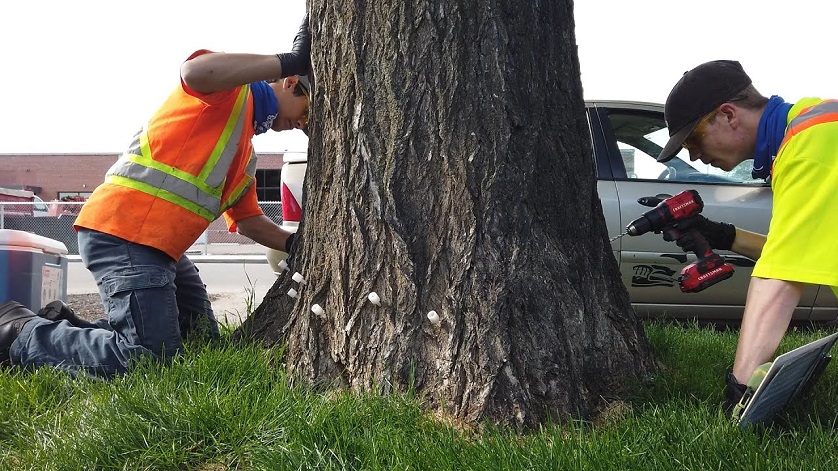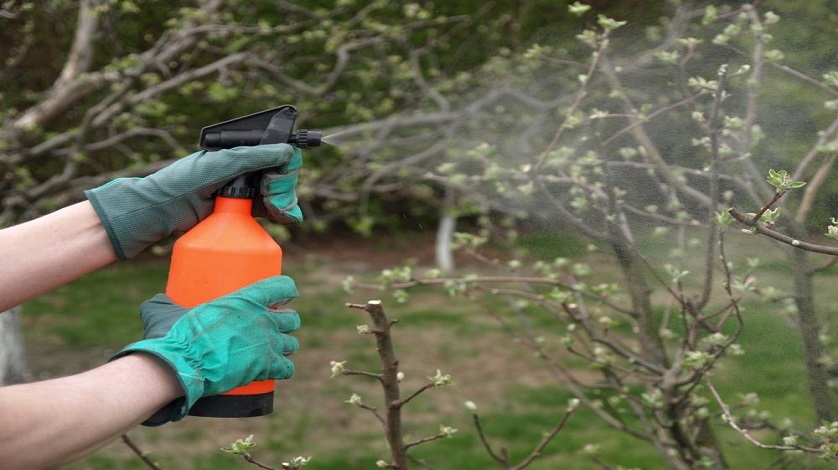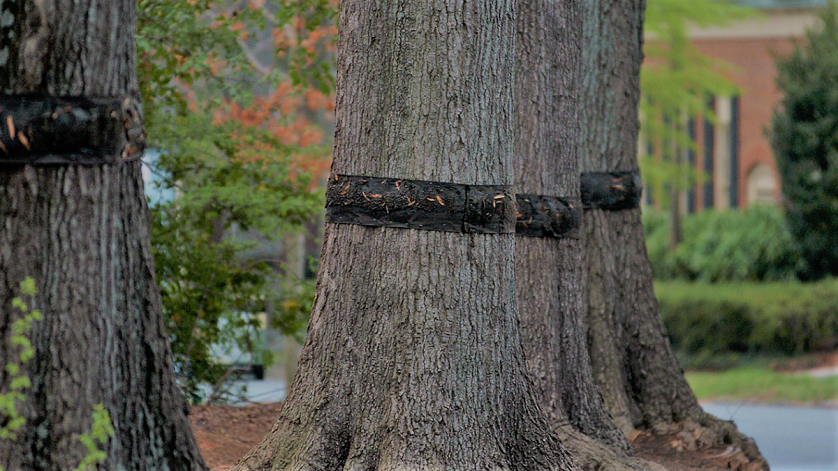Have you ever heard the legend about Elm trees? And do you know that Australia is the home of some of the most impressive specimens? These beauties fill parks and line avenues, offering amazing shades, colouring the surroundings with their changing leaves, and cleaning our air. They deserve respect and proper care so they can enrich nature for decades to come. And if have an elm in your backyard, read on to find out what you can do to keep it healthy and protect it from the elm leaf beetle.
Contents [hide]
The Story of Elms

According to Greek mythology, when Orpheus rescued his beloved Eurydice from the Underworld, he played a love song on his harp. On that spot, sprung up the first elm grove. Elms have also been a significant part of Celtic folklore and the British had specific customs attached to single, named trees. Unfortunately, most of them were destroyed by the Dutch elm disease.
However, being halfway across the world, the elms in Australia were not affected by this disease, so today you can find century-old ones in South Australia, New South Wales, and Victoria. This doesn’t mean that our elms are completely safe since bark beetles have reached New Zealand. To protect the trees, there are biosecurity rules, and home gardeners can do a lot when it comes to managing plant pests and diseases.
What Are the Signs of Elm Leaf Beetle?
All species of elm are susceptible to the Elm Leaf Beetle (Pyrrhalta luteola). It is a 4-6mm long beetle with green and brown stripes that feeds on the leaves, turning them brown and ‘lacey’. The larvae chew small holes from the underside of the leaf, and the damaged leaves dry up and fall. The elm beetle can defoliate the affected tree within one to three weeks, causing a decline in the tree’s health.
Elm Leaf Beetle Treatment

Managing elm leaf beetles can be important for preserving the health and aesthetics of elm trees, as these beetles can cause significant damage to elm foliage if left unchecked. Here are some strategies for managing elm leaf beetles:
Cultural Practices
Regular pruning and maintenance of your elm trees will promote their overall health and vigor. Healthy trees are better able to withstand beetle infestations. Protect the trunk and roots and provide suitable watering, especially during the summer period. Remove dead branches as they can provide a habitat for pests, and make cuts properly when pruning.
Biological Control
The elm beetle population can usually be kept under control with native predators and parasitoids. Encourage natural predators and parasitoids of elm leaf beetles, such as lady beetles, lacewings, and parasitic wasps. You can do this by avoiding the use of broad-spectrum insecticides that harm beneficial insects.
Chemical Control
If the infestation is severe and other methods are not sufficient, consider using insecticides. Be sure to choose insecticides labelled for use on elm trees and follow the manufacturer’s instructions. Apply insecticides during the larvae or early adult stages of the beetle’s lifecycle. One option is to use nonresidual, contact insecticides, which are sprayed on the entire foliage a few times per season.
They have low toxicity levels and don’t cause significant damage to pollinators and natural predators. Another option is to inject Imidacloprid directly into the trunk of the infected tree. Once transported to the leaves, it kills the beetles quickly. The process of elm leaf beetle trunk injection is considered the most effective and safe for pets and children.
Other Ways to Manage Elm Beetles

- Sticky Traps: Sticky traps can be used to capture adult elm leaf beetles. These traps are coated with a sticky substance that captures beetles when they land on them.
- Neem Oil: Neem oil is a natural insecticide derived from the neem tree. It can be effective in controlling elm leaf beetles. Follow the instructions on the neem oil product label for application.
- Mechanical Removal: If you have a small number of beetles, you can physically remove them by hand and drop them into a container of soapy water to drown them.
Early Detection and Monitoring
Complete eradication of this pest is unfortunately not very likely, so the best protection is early detection. Regularly inspect your elm trees for signs of elm leaf beetle infestation, such as skeletonized leaves or adult beetles. Early detection allows for more effective control.
Mulch and Soil Management
Applying mulch around the base of the tree can help conserve soil moisture and improve tree health. Healthy trees are less susceptible to infestations. Additionally, maintaining healthy soil with proper fertilization can help.
Resistant Elm Varieties
If you’re planting new elm trees, consider using elm varieties that are less susceptible to elm leaf beetles. Some elm species like the Emerald Sunshine, Patriot, Prospector, Frontier, and Morton Accolade are more resistant to infestation than others.
Tree Banding

You can wrap sticky bands around the trunk of your elm trees to trap crawling larvae as they move up and down the tree. This can be particularly effective during the larval stage. The method is environmentally friendly, but could not be very effective for heavy infestations. Bark banding is also done using pesticides. It involves applying pesticide in a band around the tree trunk, a few feet from the ground to the first branches. This can be effective only if adjacent trees are also treated.
Bottom Line
Remember that the effectiveness of these methods may vary depending on the severity of the infestation and the specific circumstances of your elm trees. It’s often best to use an integrated pest management (IPM) approach, combining multiple strategies to control elm leaf beetles while minimizing environmental impact. Additionally, always read and follow the instructions on any products you use, and consider consulting with a professional arborist or entomologist for guidance on managing elm leaf beetles in your specific situation.











